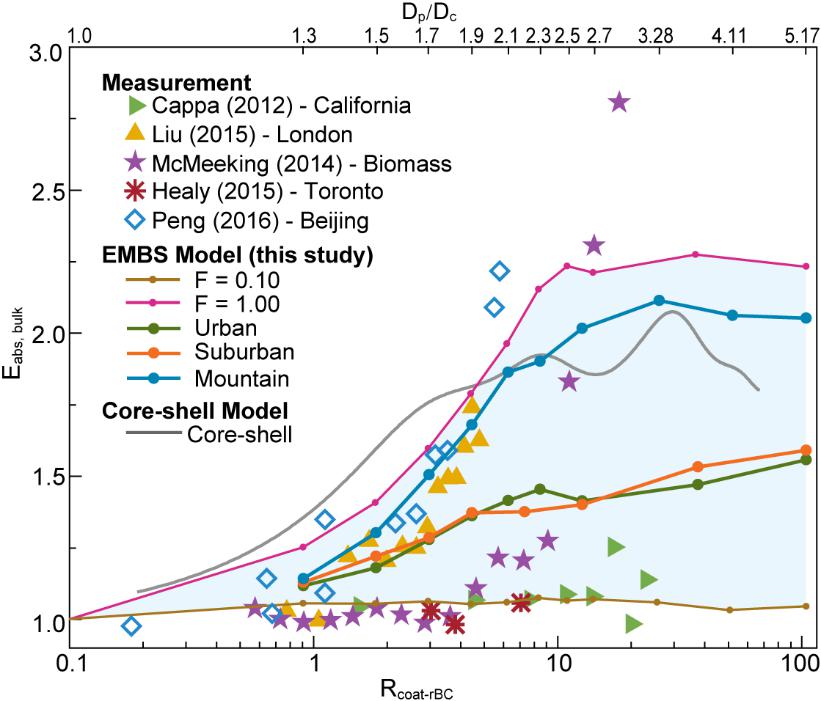Editor: 邵丹蕾 Author: Time: 2022-02-22 Number of visits :138
Absorption by black carbon (BC) in the atmosphere strongly affects radiative balance and global climate. The large discrepancies in observed and modeled BC absorption enhancements raise a hot debate. Through applying a new 3D shape model based on electron microscope observations, we propose a new framework that estimates BC absorption enhancement through accounting for detailed mixing structure diversity in individual particles. The method combined the observed micro mixing structures of BC particles in predicting the absorption enhancement of total BC particle population for the first time. Our results reveal that the diverse range of mixing structures in individual particles in ambient air leads to complex absorption enhancement that could hardly be predicted by the empirical approximation. The volume proportion of the BC embedded in coating determines absorption enhancement of individual particles when the particle to BC core diameter ratio is larger than 2.0. The bulk absorption enhancements based on diverse mixing structures provide an explanation for the globally disparate results from laboratory and field observations. The new framework linking microphysical structures to bulk BC optical properties can be used to improve assessment of climate impact.

Figure 1. Observed and modelled absorption enhancement of black carbon
